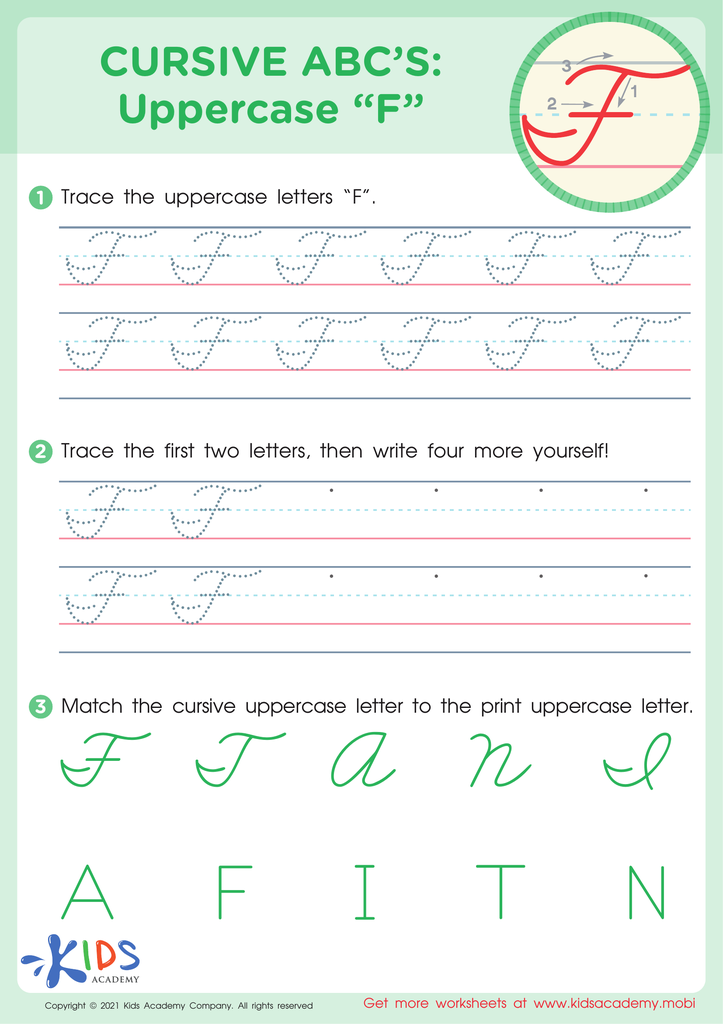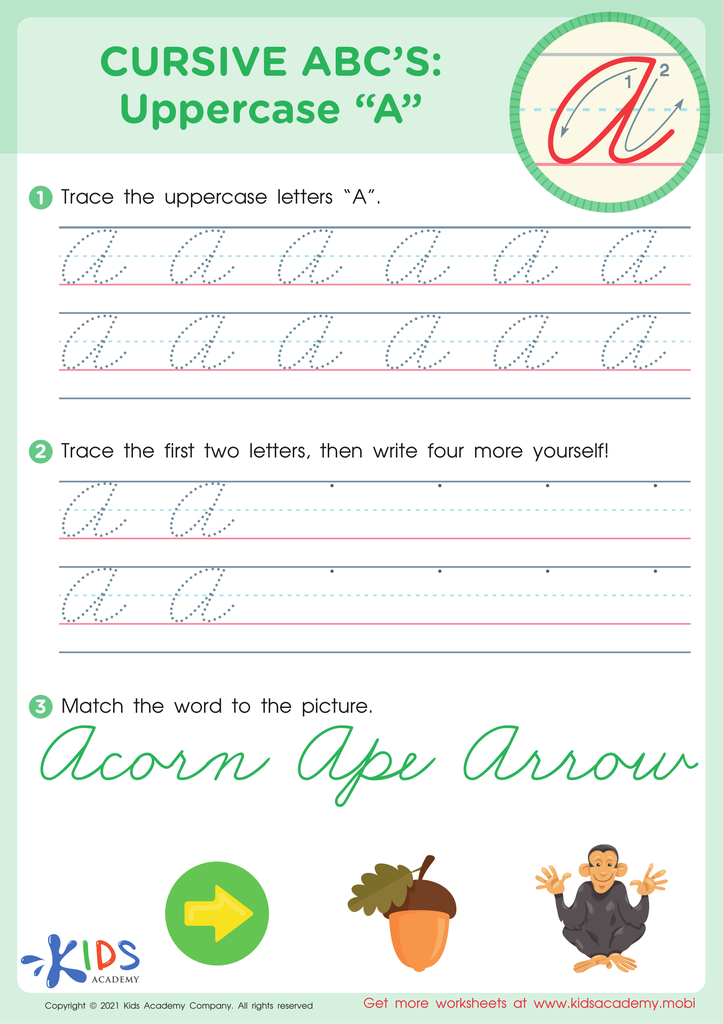Letter formation understanding Worksheets for Kids
2 filtered results
-
From - To


Cursive ABCs: Uppercase F


Cursive ABCs: Uppercase A
Question/Answer
Why is the Letter formation understanding skill important for Grade 3 students?
The Letter formation understanding skill is crucial for Grade 3 students as it enhances their handwriting fluency, making writing tasks less time-consuming and more automatic. This foundational ability allows them to focus more on the content of their writing rather than on the act of writing itself, supporting the development of more complex literacy skills such as composition and comprehension.
What are some effective activities to train students’ Letter formation understanding skill when teaching them about Cursive Letters?
Effective activities for training students in cursive letter formation include tracing letters using templates, practicing on lined paper to ensure consistent size and spacing, engaging in guided writing exercises where students connect letters in words and sentences, using tactile materials like sand or shaving cream for practice, and incorporating digital apps designed for cursive writing practice to add variety and fun to learning.#$%
How does the mastery of the Letter formation understanding skill affect a student's performance at an early age?
Mastery of letter formation at an early age significantly boosts a student's writing fluency and reading comprehension. This foundational skill underpins the ability to write efficiently and legibly, thereby enhancing overall academic performance. Early proficiency in letter formation also fosters confidence in writing tasks, contributing to a more positive attitude towards learning and schoolwork.












